Your cart is currently empty!
Month: May 2014
-
Cancer Strikes and Now I Miss the Cows
Nearly every day, I bicycle past this farm and enjoy looking at the peaceful Simmental cattle foraging on the idyllic pasture. Every year there are new calves and I get to watch their mothers raise them. I’ve been enjoying them for nine years. A few months ago the cattle disappeared and I wondered what happened to them. Today I learned that the owner of the farm has cancer and is no longer able to care for the cattle. They are at his brother’s farm not too far away.
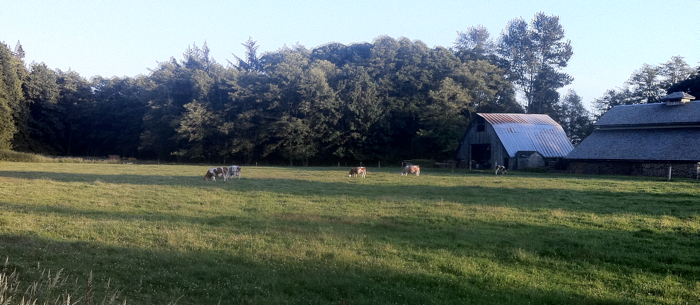

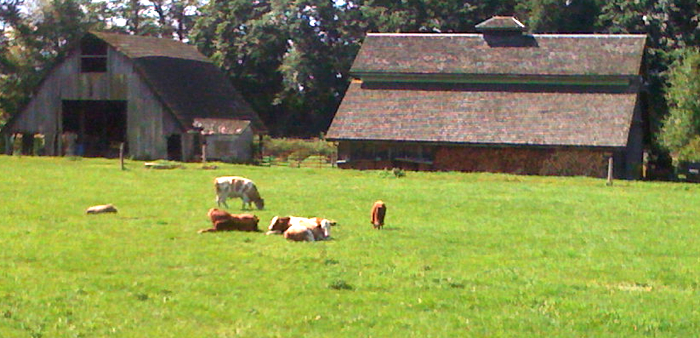
A farmer I don’t even know gets cancer and suddenly, the beautiful cattle I enjoyed watching nearly every day are gone. Everything changes.So many people have appreciated the beauty of this man’s farm. Besides the cattle, I enjoy looking at the stacks of firewood the farmer makes each year. Some years as he stacks the firewood along the side of the barn he makes patterns with the firewood. One year he “drew” a tree on it’s side using different shades and sizes of firewood. A single person can bring so much happiness to others without even realizing it.
-
Beauty in the Grass
Biking home from the post office yesterday, I was climbing up Bow Hill, when I noticed some bright purple vines snaking through the grassy hillside.
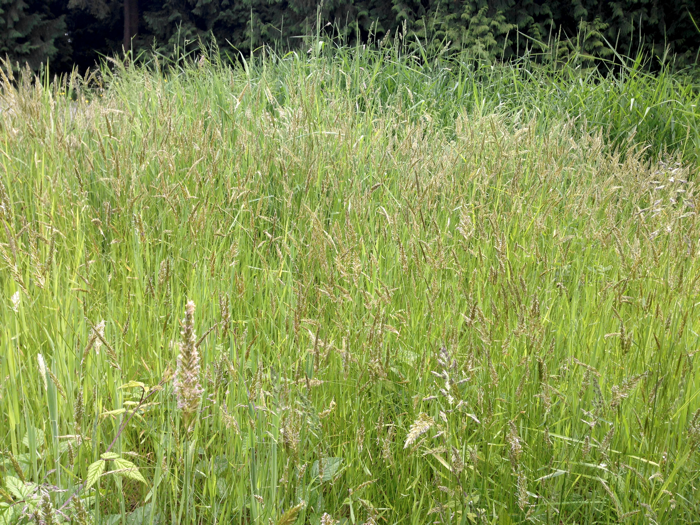
The color of the purple vines was so intense, I had to stop and admire them.


They were new berry vines. I never would have noticed them if I had been in the car. Four years ago I made a decision to stop driving when I made my daily errands. I mostly did this to work exercise into my daily routine so I could lose weight. That I managed to do, but bicycling forty five minutes to an hour each day as I went about my errands, also opened my eyes to seeing things along the roadside I missed when I sped by in the car.When you are on a bicycle, it is much easier to stop and enjoy beautiful things than it is when you are driving a car. For those of you enjoying breakfast or lunch at Tweets Café this weekend, there is a good chance that the eggs you are eating and possibly the salad you are enjoying were delivered by bicycle from just up the hill. And that the person who pedaled those eggs and salad greens to Tweets, stopped to enjoy the beauty of purple berry vines on their way home.
-
Everything Moves, Everything Changes

While at the post office yesterday, I noticed that the line of concrete curb blocks there was helter-skelter. I’m pretty sure that when these curb blocks were first placed, they made a straight line. The workers who placed them may even have been proud at how straight a curb they had laid.Over the years, they have been bumped by vehicles so many times that they look like they were just tossed out the back of a pickup and left where they fell.
It just goes to show that everything moves, everything changes. Even inanimate, heavy concrete blocks with feet crawl over time.
The very first noble truth of the Buddha points out that suffering is inevitable for human beings as long as we believe that things last — that they don’t disintegrate, that they can be counted on to satisfy our hunger for security. Pema Chodron ~ When Things Fall Apart p12.
If you can’t rely on a block of concrete to stay still, what can you rely on?
-
Why Is Mayonnaise White?

When I see mayonnaise in the store, I always wonder why it is so white. The typical recipe for mayonnaise starts with egg yolks, adds vinegar or lemon juice, salt, pepper, mustard (I prefer to use ground mustard seeds). After mixing these ingredients, you start adding vegetable oil drop by drop by drop until you have a thick emulsified dressing.


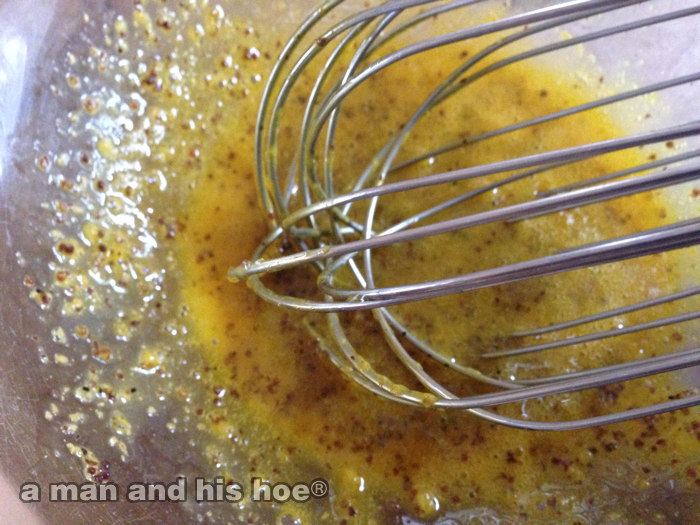
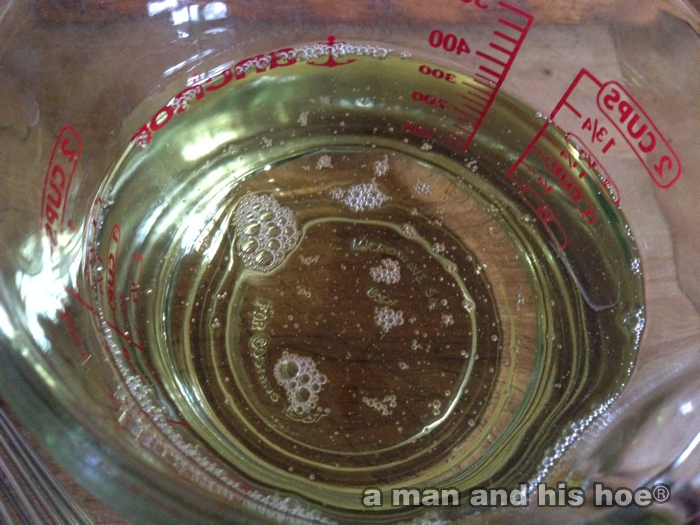

And this is what my mayonnaise looks like. Starting with egg yolks this rich and bright, the mayonnaise I make at home always comes out quite yellow. So what are the food companies doing to make their mayonnaise so white?A look at their ingredients reveals the answer. A check of commercial mayonnaise reveals that they are adding water to their mayonnaise. In some, water is even the first ingredient, which means there is more water than any other ingredient.
Mayonnaise recipes usually call for a ratio of one egg yolk per cup of oil. However, by using water, you can actually emulsify up to a dozen cups of oil with just one egg yolk. Commercial mayonnaise makers also often use the whole egg, not just the egg yolk. As a result, the ratio of egg yolk to oil is much less than in home made mayonnaise which is why their mayonnaise is so white.
What Makes Store Brand Mayo White ~ Stack Exchange
-
Never Shower Again? Using Bacteria to Keep Us Clean
Julia Scott wrote an interesting article in the New York Times today about her My No-Soap, No-Shampoo, Bacteria-Rich Hygiene Experiment. She took part in an experiment done by AOBiome, a biotech start-up in Cambridge, MA. The firm is developing a living bacterial skin tonic.
The premise behind the tonic is that humans don’t need to shower or bathe or wash their hair. In fact, “the M.I.T.-trained chemical engineer who invented AO+ has not showered for the past 12 years.” Instead, what we need to do is to restore the right balance of bacteria living on our skin and hair, and let the bacteria keep us clean. According to Julia Scott:
The tonic looks, feels and tastes like water, but each spray bottle of AO+ Refreshing Cosmetic Mist contains billions of cultivated Nitrosomonas eutropha, an ammonia-oxidizing bacteria (AOB) that is most commonly found in dirt and untreated water. AOBiome scientists hypothesize that it once lived happily on us too — before we started washing it away with soap and shampoo — acting as a built-in cleanser, deodorant, anti-inflammatory and immune booster by feeding on the ammonia in our sweat and converting it into nitrite and nitric oxide.
In the experiment, Julia Scott spent four weeks without taking a shower with soap. Her showers were limited to three minute rinses with water, no soap or shampoo. Instead, she misted herself with the water containing Nitrosomonas eutropha before she left her house and when she returned.
Even though her hair did darken and become more oily, her skin changed for the better. As she describes is, “It actually became softer and smoother, rather than dry and flaky, as though a sauna’s worth of humidity had penetrated my winter-hardened shell. And my complexion, prone to hormone-related breakouts, was clear.”
During the experiments, AOBiome was taking a swab of her skin every week to monitor the changes in her microbial community. Though her swabs showed that her bacterial community was similar to that of the majority of Americans’, by week 2 the swab also “showed hundreds of unknown bacterial strains that simply haven’t been classified yet.”
After the four week experiment was over, it took just a few, short showers using shampoo and soap for her to destroy all the Nitrosomonas eutropha she had cultivated on her body during the four week experiment.

Maybe the chickens are on to something with their dirt baths.